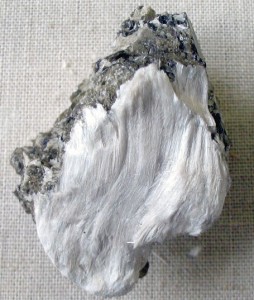
It
is often thought that medieval men and women did not care too much
about personal hygiene or keeping clean. One nineteenth-century
historian writing about daily life in the Middle Ages commented that
there were no baths for a thousand years. However, a closer look shows
that baths and bathing were actually quite common in the Middle Ages,
but in a different way than one might expect.
There are stories of how people didn’t bathe in the Middle Ages – for
example, St Fintan of Clonenagh was said to take a bath only once a
year, just before Easter, for twenty-four years. Meanwhile, the
Anglo-Saxons were believed that the Vikings were overly concerned with
cleanliness since they took a bath once a week. On the other hand, we
can also see many literary references and works of art depicting people
taking baths, and noting that it was part of daily activity.
Personal hygiene did exist in the Middle Ages – people were well
aware that cleaning their face and hands – health manuals from the
period note that it was important to get rid of dirt and grime. They
also explained that it was important to keep the entire body clean. For
example, the fourteenth-century writer Magninius Mediolanesis stated in
his work
Regimen sanitatis that ”The bath cleans the external body parts of dirt left behind from exercise on the outside of the body.”
He also adds a second reason for bathing: “if any of the waste
products of third digestion are left under the skin that were not
resolved by exercise and massage, these will be resolved by the bath.”
There was a strong connection between bathing and eating, which could
affect one’s overall health (these ideas have not quite left us – many
people might remember their mother telling them not to go swimming for
an hour after a meal). Baths could relieve digestion, stop diarrhoea –
but taken improperly cold lead to weakness of the heart, nausea or
fainting.
Medieval writers saw bathing as a serious and careful activity. One medical treatise, the
Secreta Secretorum,
has an enitre section on baths. It notes that the spring and winter are
good times for bathing, but it should be avoided as much as possible in
the summer. It also warns that excessively long baths lead to fatness
and feebleness. Meanwhile, Magninius Mediolanesis offers over 57 bathing
prescriptions to use in specific conditions, like old age, pregnancy
and travelling and his rules for bathing run 1500 words long.
Some famous bathing sites had their own rules. In 1336, Pietro de
Tussignano formulated twelve rules for those coming to the Italian town
at Burmi, which lies near Switzerland, to get the healing effects of its
bath. They include that the person should beforehand not to have too
much sexual intercourse nor have abstained from it, and that he should
also enter the bath with an empty stomach (if they had to have food it
could only two spoons of raisins with a little wine). You could only
pour the water over your head if you were clean-shaven, otherwise your
hairs might impede the effects of the water. The person should take the
baths for fifteen days, spending up to an hour a day getting washed, but
if all goes well, the bather will benefit for over six months with
improved health.

If people could afford a to have private bath – and not many could –
they would use a wooden tub that could also have a tent-like cloth on
top of it. Attendants would bring jugs and pots of hot water to fill
the tub. In John Russell’s
Book of Nurture, written in the second half of the fifteenth-century, he advises servants that if their lord wants a bath they should:
hang sheets, round the roof, every one full of flowers and sweet
green herbs, and have five or six sponges to sit or lean upon, and see
that you have one big sponge to sit upon, and a sheet over so that he
may bathe there for a while, and have a sponge also for under his feet,
if there be any to spare, and always be careful that the door is shut.
Have a basin full of hot fresh herbs and wash his body with a soft
sponge, rinse him with fair warm rose-water, and throw it over him.
He adds that if the lord has pains or aches, it is good to boil
various herbs like camomile, breweswort, mallow and brown fennel and add
them to the bath.
Records
from medieval England show that its kings often enjoyed these baths.
When King John traveled around his kingdom, he took a bathtub with him,
and had a personal attendant named William who handled it. Meanwhile, in
1351 Edward III paid for taps of hot and cold water supply to his
bathtub at Westminster Palace.

Royalty throughout Europe often entertained guests with baths, often
trying to impress each other with how luxurious they could make it. This
tradition even goes back to the Carolingians - Einhard says that
Charlemagne loved taking baths, and that “he would invite not only his
sons to bathe with him, but his nobles and friends as well, and
occasionally even a crowd of attendants and bodyguards, so that
sometimes a hundred men or more would be in the water together.”
Wealthy monasteries often could pipe in water and have baths as well.
Some monastic rules suggest that monks did not take regular baths. The
monks of Westminster Abbey, for example, were required to have a bath
four times a year: at Christmas, Easter, the end of June, and the end of
September. It is hard to know if these rules were being followed, or if
they were intended to mean that the monks could
only bathe
then. We do know, however, that Westminster Abbey employed a
bath-attendent who was paid daily two loaves of bread, as well as a
stipend of £1 per year, which seems to indicate his services were
regularly used.
For most people, having a private bath was not an option – it was
simply too costly and too time-consuming to have their own baths. That
does not mean they went without bathing, for public baths were very
common throughout Europe. By the thirteenth-century one could find over
32 bathhouses in Paris; Alexander Neckham, who lived in that city a
century earlier, says that he would be awakened in the mornings by
people crying in the streets that ‘that baths are hot!”
In Southwark, the town on the opposite side of the Thames River from
London, a person could choose from 18 hot baths. Even smaller towns
would have bathhouses, often connected with the local bakery – the baths
could make use of the heat coming from their ovens to help heat their
water.
In her book
Clean: A History of Personal Hygiene and Purity Virginia
Smith explains,”By the fifteenth-century, bath feasting in many town
bathhouses seems to have been as common as going out to a restaurant was
to become four centuries later. German bath etchings from the fifteenth
century often feature the town bathhouse, with a long row of bathing
couples eating a meal naked in bathtubs, often several to a tub, with
other couples seen smiling in beds in the mid-distance.”

Public bathhouses were very popular throughout medieval Europe but
they also raised controversy as some objected to the fact that men and
women could see and be with each other naked, and that this could lead
to illicit sex. A thirteenth century church writer made this
prohibition: “Hast thou washed thyself in the bath with thy wife and
other women and seen them nude, and they thee? If thou hast, thou
shouldst fast for three days on bread and water.”
However, it seems that church officials had little influence on
bathhouses in the Middle Ages. Medieval people, in fact, seems to have
accepted that the bathhouse was not only a place to get clean and
healthy, but it could also be a place where sex and prostitution could
occur. The bathhouses in Southwark were called the Stews, and were
largely seen to be just fronts for brothels. These practices were
usually overlooked by local authorities, who believed that it was best
to allow some level of sexual outlets for its young men, otherwise risk
more serious problems.

The
prominence of the public bathhouse went into rapid decline in the
sixteenth-century. Several suggestions have been made to as why – were
more puritanical religious people able to impose their moral values on
the community, or were the diseases that struck Europe since the Black
Death convincing people from to avoid them. The disease of syphilis,
which broke out in Europe the late fifteenth-century, would have also
motivated people to stop their sexual promiscuity, thus reducing the
other reasons for having a bathhouse.
The Dutch philosopher Erasmus, writing in 1526, notes the fall of the
public bathhouse. “Twenty-five years ago, nothing was more fashionable
in Brabant than the public baths,” he remarked. “Today there are none,
the new plague has taught us to avoid them.”











 Cheryl
Crausewell of Dora, Alabama, found that someone had TPed the trees in
her yard on Saturday night. The family tried to clean up the mess, but
some of the toilet paper in a magnolia tree was out of their reach. What
to do? Maybe they should have tried a ladder, but instead they set it
on fire. A small piece of paper drifted out to the yard and ignited the
grass.
Cheryl
Crausewell of Dora, Alabama, found that someone had TPed the trees in
her yard on Saturday night. The family tried to clean up the mess, but
some of the toilet paper in a magnolia tree was out of their reach. What
to do? Maybe they should have tried a ladder, but instead they set it
on fire. A small piece of paper drifted out to the yard and ignited the
grass.




















